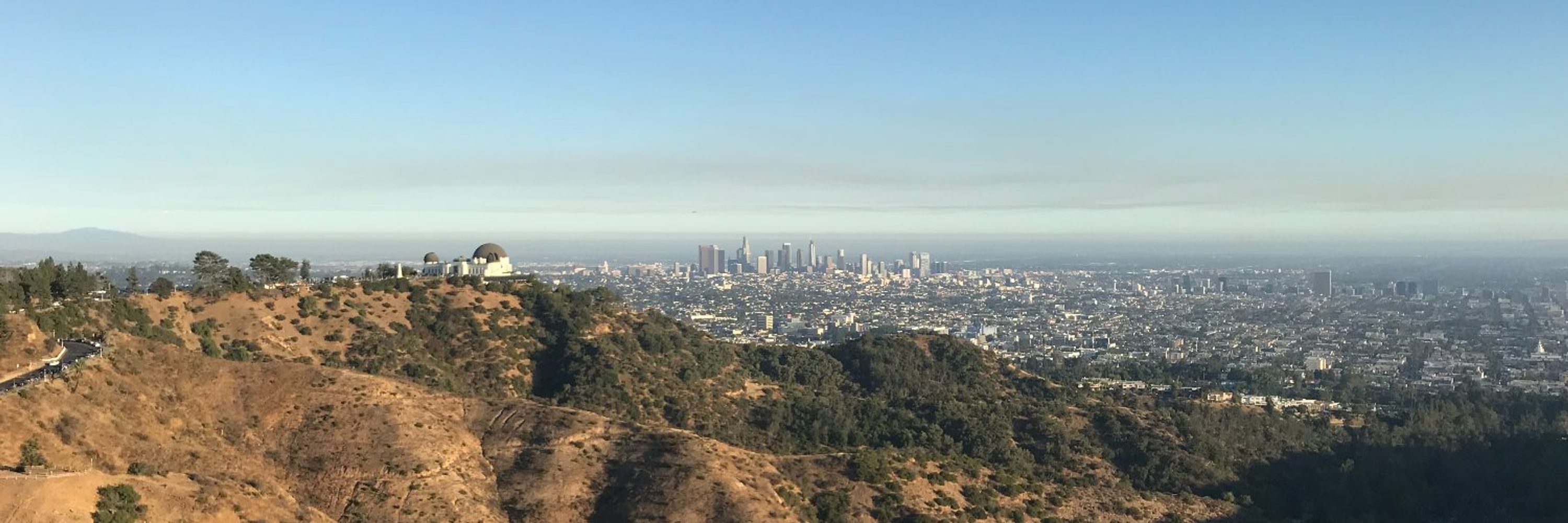
Johannes Morstein
@morstein.bsky.social
Assistant Professor at Caltech | Chemical Biologist
morsteinlab.caltech.edu
morsteinlab.caltech.edu
Reposted by Johannes Morstein
How can we study target engagement and selectivity of covalent inhibitors? Which electrophilic probes are best suited to study a certain amino acid?
Our study on "Profiling the proteome-wide selectivity of diverse electrophiles" is published in Nature Chemistry.(1/7)
www.nature.com/articles/s41...
Our study on "Profiling the proteome-wide selectivity of diverse electrophiles" is published in Nature Chemistry.(1/7)
www.nature.com/articles/s41...

Profiling the proteome-wide selectivity of diverse electrophiles - Nature Chemistry
Covalent inhibitors are powerful entities in drug discovery. Now the amino acid selectivity and reactivity of a diverse electrophile library have been assessed proteome-wide using an unbiased workflow...
www.nature.com
October 30, 2025 at 10:27 AM
How can we study target engagement and selectivity of covalent inhibitors? Which electrophilic probes are best suited to study a certain amino acid?
Our study on "Profiling the proteome-wide selectivity of diverse electrophiles" is published in Nature Chemistry.(1/7)
www.nature.com/articles/s41...
Our study on "Profiling the proteome-wide selectivity of diverse electrophiles" is published in Nature Chemistry.(1/7)
www.nature.com/articles/s41...
Reposted by Johannes Morstein
The Division of Chemistry and Chemical Engineering at Caltech invites applications for a faculty position at all levels and in all areas of chemistry, biochemistry, and chemical engineering.
Interested candidates should apply at
applications.caltech.edu/job/chemistry
Deadline: Dec. 1, 2025.
Interested candidates should apply at
applications.caltech.edu/job/chemistry
Deadline: Dec. 1, 2025.

October 9, 2025 at 8:29 PM
The Division of Chemistry and Chemical Engineering at Caltech invites applications for a faculty position at all levels and in all areas of chemistry, biochemistry, and chemical engineering.
Interested candidates should apply at
applications.caltech.edu/job/chemistry
Deadline: Dec. 1, 2025.
Interested candidates should apply at
applications.caltech.edu/job/chemistry
Deadline: Dec. 1, 2025.
Reposted by Johannes Morstein
A while back we found that the lipid-binding protein PLEKHA4 boosts Wnt/β-catenin signaling and drives melanoma growth in vivo. Now, we (Nathan Frederick) identify small-molecule inhibitors of PLEKHA4 & related proteins with anticancer activity in vitro! pubs.acs.org/doi/10.1021/....

Discovery, Optimization, and Anticancer Activity of Lipid-Competitive Pleckstrin Homology Domain-Containing Family A Inhibitors
Phosphoinositide signaling is a major cellular mechanism controlling cancer cell viability, proliferation, and survival. Yet, inhibition of lipid kinases that produce oncogenic phosphoinositides has afforded only a limited number of efficacious drugs attributed in large part to on-target toxicity resulting from the pleiotropic effects of these signaling lipids. Targeting the specific phosphoinositide effector pathways via competitive inhibitors of phosphoinositide-recognizing pleckstrin homology (PH) domains represents a relatively unexplored means to achieve greater specificity. Herein, we present the discovery from in silico screening, structure–activity relationship (SAR) optimization, and cellular characterization of novel phosphoinositide-competitive inhibitors of the pleckstrin homology domain-containing A (PLEKHA) family. These compounds induce cytotoxic effects in BRAF and NRAS mutant melanoma cells, consistent with on-target inhibition, and the most potent compound is activated by endogenous esterase activity, suggesting that prodrug esters represent a viable strategy for targeting the phosphoinositide-binding pockets of the PLEKHA family of PH domains.
pubs.acs.org
October 7, 2025 at 4:06 PM
A while back we found that the lipid-binding protein PLEKHA4 boosts Wnt/β-catenin signaling and drives melanoma growth in vivo. Now, we (Nathan Frederick) identify small-molecule inhibitors of PLEKHA4 & related proteins with anticancer activity in vitro! pubs.acs.org/doi/10.1021/....
Reposted by Johannes Morstein
Out today in @nature.com: Together with the Honigmann, Shevchenko, Drobot and Hof labs, we present a general workflow for imaging the localization and transport of individual lipids in cells and mapping their metabolism.
www.nature.com/articles/s41...
www.nature.com/articles/s41...

August 21, 2025 at 5:19 AM
Out today in @nature.com: Together with the Honigmann, Shevchenko, Drobot and Hof labs, we present a general workflow for imaging the localization and transport of individual lipids in cells and mapping their metabolism.
www.nature.com/articles/s41...
www.nature.com/articles/s41...
Reposted by Johannes Morstein
Quite a week for #lipidtime: phenomenal study using bifunctional lipid probes to quantify intracellular lipid transport from @nadlerlab.bsky.social and colleagues is now out @nature.com! www.nature.com/articles/s41...

Quantitative imaging of lipid transport in mammalian cells - Nature
Directional, non-vesicular lipid transport is responsible for fast, species-selective lipid sorting into organelle membranes.
www.nature.com
August 20, 2025 at 10:01 PM
Quite a week for #lipidtime: phenomenal study using bifunctional lipid probes to quantify intracellular lipid transport from @nadlerlab.bsky.social and colleagues is now out @nature.com! www.nature.com/articles/s41...
Reposted by Johannes Morstein
The 4 chemically targeted Laurdan derivatives (for mitochondria, ER, lyso/endosomes, and the Golgi) that we published last year are now available (at a pretty reasonable price) from Avanti Polar Lipids (cat #880194, 880197, 880193, 880196). These have been very popular! pubs.acs.org/doi/full/10....

Organelle-Targeted Laurdans Measure Heterogeneity in Subcellular Membranes and Their Responses to Saturated Lipid Stress
Organelles feature characteristic lipid compositions that lead to differences in membrane properties. In cells, membrane ordering and fluidity are commonly measured using the solvatochromic dye Laurdan, whose fluorescence is sensitive to lipid packing. As a general lipophilic dye, Laurdan stains all hydrophobic environments in cells; therefore, it is challenging to characterize membrane properties in specific organelles or assess their responses to pharmacological treatments in intact cells. Here, we describe the synthesis and application of Laurdan-derived probes that read out the membrane packing of individual cellular organelles. The set of organelle-targeted Laurdans (OTL) localizes to the ER, mitochondria, lysosomes, and Golgi compartments with high specificity while retaining the spectral resolution needed to detect biological changes in membrane ordering. We show that ratiometric imaging with OTLs can resolve membrane heterogeneity within organelles as well as changes in lipid packing resulting from inhibition of trafficking or bioenergetic processes. We apply these probes to characterize organelle-specific responses to saturated lipid stress. While the ER and lysosomal membrane fluidity is sensitive to exogenous saturated fatty acids, that of mitochondrial membranes is protected. We then use differences in ER membrane fluidity to sort populations of cells based on their fatty acid diet, highlighting the ability of organelle-localized solvatochromic probes to distinguish between cells based on their metabolic state. These results expand the repertoire of targeted membrane probes and demonstrate their application in interrogating lipid dysregulation.
pubs.acs.org
August 15, 2025 at 3:57 PM
The 4 chemically targeted Laurdan derivatives (for mitochondria, ER, lyso/endosomes, and the Golgi) that we published last year are now available (at a pretty reasonable price) from Avanti Polar Lipids (cat #880194, 880197, 880193, 880196). These have been very popular! pubs.acs.org/doi/full/10....
Excited to share our new @pubs.acs.org paper! We engineered cells with ~10% photolipids in the ER membrane. This enabled optical control of membrane viscosity to study its impact on ER→Golgi protein transport. @dirktrauner.bsky.social @noemijimenezrojo.bsky.social
pubs.acs.org/doi/10.1021/...
pubs.acs.org/doi/10.1021/...

Optical Control of Membrane Viscosity Modulates ER-to-Golgi Trafficking
The lipid composition of cellular membranes is highly dynamic and undergoes continuous remodeling, affecting the biophysical properties critical to biological function. Here, we introduce an optical a...
pubs.acs.org
August 14, 2025 at 10:43 AM
Excited to share our new @pubs.acs.org paper! We engineered cells with ~10% photolipids in the ER membrane. This enabled optical control of membrane viscosity to study its impact on ER→Golgi protein transport. @dirktrauner.bsky.social @noemijimenezrojo.bsky.social
pubs.acs.org/doi/10.1021/...
pubs.acs.org/doi/10.1021/...
Reposted by Johannes Morstein
Thrilled to have our story on the regulation of lysosomal lipids out in @cp-cellmetabolism.bsky.social! The work was led by two outstanding grad students Jess Davidson and Raghav Jain probing mechanistic control of energy expenditure @hhmi.org @uwbiochem.bsky.social
Online now: Hepatic lipid remodeling in cold exposure uncovers direct regulation of bis(monoacylglycero)phosphate lipids by phospholipase A2 group XV

Hepatic lipid remodeling in cold exposure uncovers direct regulation of bis(monoacylglycero)phosphate lipids by phospholipase A2 group XV
Davidson et al. demonstrated that liver lysosomes orchestrate the metabolic adaptation to cold by rewiring lipid processing. They show that phospholipase A2 group XV (PLA2G15) breaks down bis(monoacylglycerol)phosphate (BMP) lipids to shift lysosomal function and metabolism in response to direct transcription factor EB regulation.
dlvr.it
May 15, 2025 at 12:06 PM
Thrilled to have our story on the regulation of lysosomal lipids out in @cp-cellmetabolism.bsky.social! The work was led by two outstanding grad students Jess Davidson and Raghav Jain probing mechanistic control of energy expenditure @hhmi.org @uwbiochem.bsky.social
Reposted by Johannes Morstein
Why are biological membranes asymmetric, with different lipids in the two bilayer leaflets? Discovered in the 70s, lipid asymmetry is linked to many cellular processes, but why the cell needs it is largely unclear. @pavelbarahtjan.bsky.social addresses this question: www.biorxiv.org/content/10.1...

May 6, 2025 at 9:01 AM
Why are biological membranes asymmetric, with different lipids in the two bilayer leaflets? Discovered in the 70s, lipid asymmetry is linked to many cellular processes, but why the cell needs it is largely unclear. @pavelbarahtjan.bsky.social addresses this question: www.biorxiv.org/content/10.1...
Reposted by Johannes Morstein
Excited to share that our cell surface proteome review is now online on Chemical Reviews! 🥰 We highlight recent advances of techniques mapping cell surface protein expression, protein-protein interactions, extracellular PTMs and MHC complexes. @jimwellsucsf.bsky.social pubs.acs.org/doi/10.1021/...

Engineered Proteins and Chemical Tools to Probe the Cell Surface Proteome
The cell surface proteome, or surfaceome, is the hub for cells to interact and communicate with the outside world. Many disease-associated changes are hard-wired within the surfaceome, yet approved drugs target less than 50 cell surface proteins. In the past decade, the proteomics community has made significant strides in developing new technologies tailored for studying the surfaceome in all its complexity. In this review, we first dive into the unique characteristics and functions of the surfaceome, emphasizing the necessity for specialized labeling, enrichment, and proteomic approaches. An overview of surfaceomics methods is provided, detailing techniques to measure changes in protein expression and how this leads to novel target discovery. Next, we highlight advances in proximity labeling proteomics (PLP), showcasing how various enzymatic and photoaffinity proximity labeling techniques can map protein–protein interactions and membrane protein complexes on the cell surface. We then review the role of extracellular post-translational modifications, focusing on cell surface glycosylation, proteolytic remodeling, and the secretome. Finally, we discuss methods for identifying tumor-specific peptide MHC complexes and how they have shaped therapeutic development. This emerging field of neo-protein epitopes is constantly evolving, where targets are identified at the proteome level and encompass defined disease-associated PTMs, complexes, and dysregulated cellular and tissue locations. Given the functional importance of the surfaceome for biology and therapy, we view surfaceomics as a critical piece of this quest for neo-epitope target discovery.
pubs.acs.org
April 4, 2025 at 8:19 PM
Excited to share that our cell surface proteome review is now online on Chemical Reviews! 🥰 We highlight recent advances of techniques mapping cell surface protein expression, protein-protein interactions, extracellular PTMs and MHC complexes. @jimwellsucsf.bsky.social pubs.acs.org/doi/10.1021/...
Great to see you Jeremy - congratulations on the ACS Chem Biol Young Investigator Award!!
Had a fun #lipidtime chat with @morstein.bsky.social at #ACSSpring2025 — only the head groups are shown here but you can infer that the acyl tails are different lengths in these two species

March 26, 2025 at 4:18 AM
Great to see you Jeremy - congratulations on the ACS Chem Biol Young Investigator Award!!
Reposted by Johannes Morstein
Are lipids actively sorted during clathrin mediated endocytosis like proteins? @mathilda95.bsky.social addresses this key open question together with our collaborators from the Honigmann and Modes labs using a new Lipid-STED workflow.
www.biorxiv.org/content/10.1...
www.biorxiv.org/content/10.1...
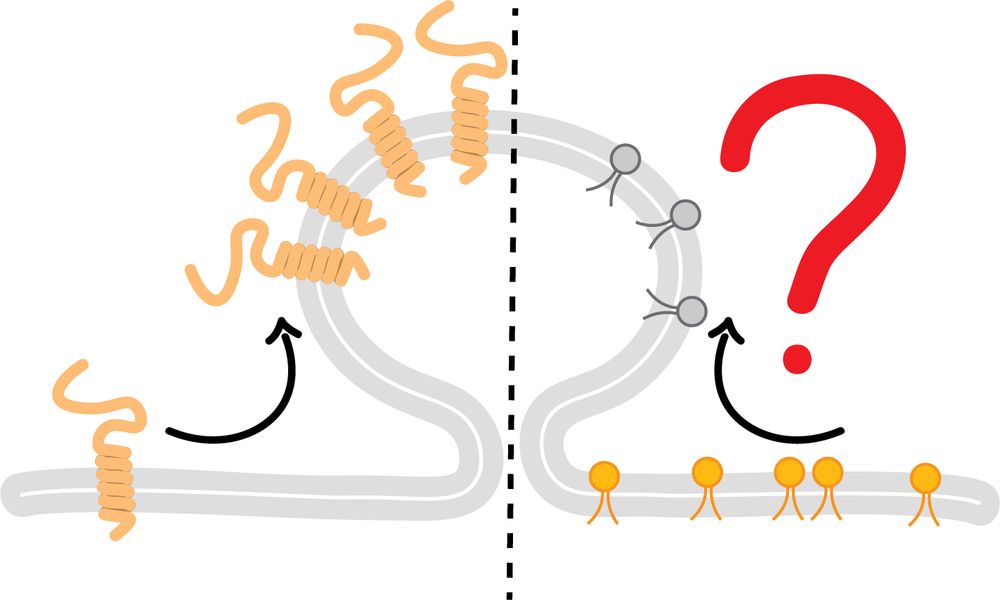
March 10, 2025 at 11:57 AM
Are lipids actively sorted during clathrin mediated endocytosis like proteins? @mathilda95.bsky.social addresses this key open question together with our collaborators from the Honigmann and Modes labs using a new Lipid-STED workflow.
www.biorxiv.org/content/10.1...
www.biorxiv.org/content/10.1...
Reposted by Johannes Morstein
🚨New preprint: There's this overlooked phospholipid with 3 acyl tails called NAPE that is made during ischemia. We identified its interactome & found it regulates lactate flux, suggesting metabolic functions in response to hypoxia. Congrats to Dylan Chiu! doi.org/10.26434/che... #lipidtime #chembio


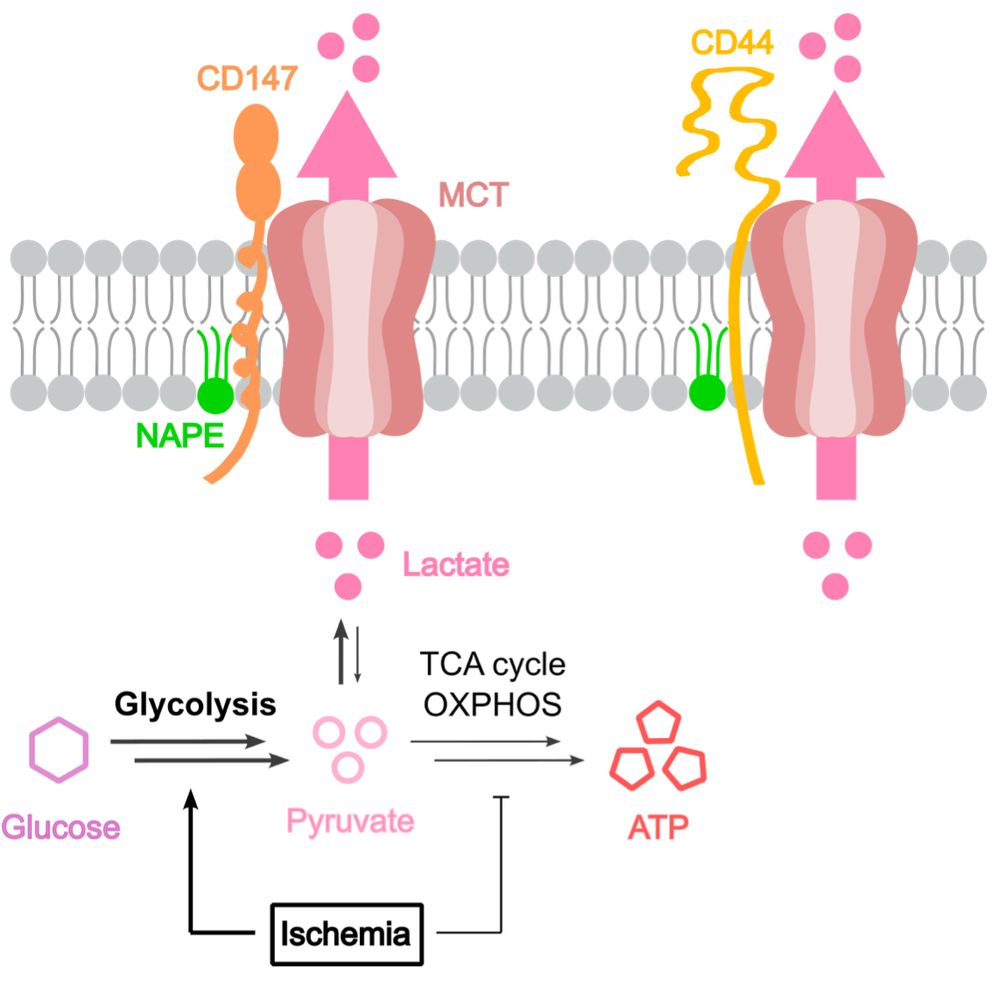

March 6, 2025 at 3:15 PM
🚨New preprint: There's this overlooked phospholipid with 3 acyl tails called NAPE that is made during ischemia. We identified its interactome & found it regulates lactate flux, suggesting metabolic functions in response to hypoxia. Congrats to Dylan Chiu! doi.org/10.26434/che... #lipidtime #chembio
Reposted by Johannes Morstein
Check out our paper on veratramine and isosteroidal alkaloids, now published in JACS.
pubs.acs.org/doi/10.1021/...
pubs.acs.org/doi/10.1021/...

Concise Synthesis of (−)-Veratramine and (−)-20-iso-Veratramine via Aromative Diels–Alder Reaction
A concise and convergent synthesis of the isosteroidal alkaloids veratramine and 20-iso-veratramine has been accomplished. A Horner–Wadsworth–Emmons olefination joins two chiral building blocks of app...
pubs.acs.org
January 15, 2025 at 11:56 AM
Check out our paper on veratramine and isosteroidal alkaloids, now published in JACS.
pubs.acs.org/doi/10.1021/...
pubs.acs.org/doi/10.1021/...
Reposted by Johannes Morstein
Overjoyed and honestly relieved to share a Chem Rev magnum opus from Brian Chen & Julia Li titled Synthetic Lipid Biology! In it, we organize efforts across numerous fields to create, manipulate, and analyze lipids and biomembranes. Check it out! doi.org/10.1021/acs.... #lipidtime #chemsky #chembio
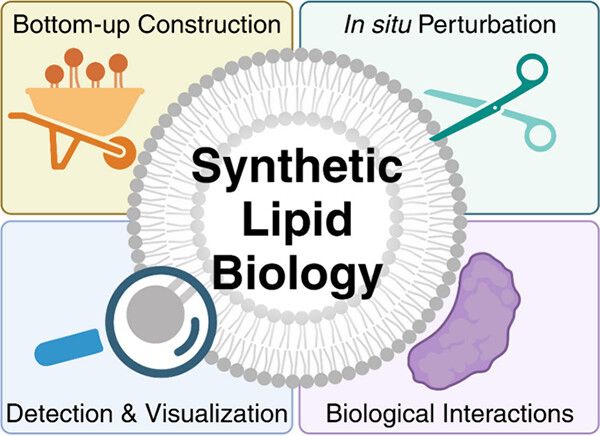



January 14, 2025 at 1:49 PM
Overjoyed and honestly relieved to share a Chem Rev magnum opus from Brian Chen & Julia Li titled Synthetic Lipid Biology! In it, we organize efforts across numerous fields to create, manipulate, and analyze lipids and biomembranes. Check it out! doi.org/10.1021/acs.... #lipidtime #chemsky #chembio
Reposted by Johannes Morstein
Please consider making a contribution to this special fund that will be used by Caltech and JPL to directly support affected individuals and their families greatly impacted by this week's devastating fires in Southern California.
giving.caltech.edu/areas-to-sup...
giving.caltech.edu/areas-to-sup...

January 12, 2025 at 6:38 PM
Please consider making a contribution to this special fund that will be used by Caltech and JPL to directly support affected individuals and their families greatly impacted by this week's devastating fires in Southern California.
giving.caltech.edu/areas-to-sup...
giving.caltech.edu/areas-to-sup...
Reposted by Johannes Morstein
First Princeton paper! Activity-based sensing plus narrow Raman signatures enable multiplex copper imaging, revealing crosstalk between high antioxidant response element NRF2 activation and low labile Cu in cancer. Fun project with Wei Min’s lab at Columbia! #chemsky pubs.acs.org/doi/10.1021/...
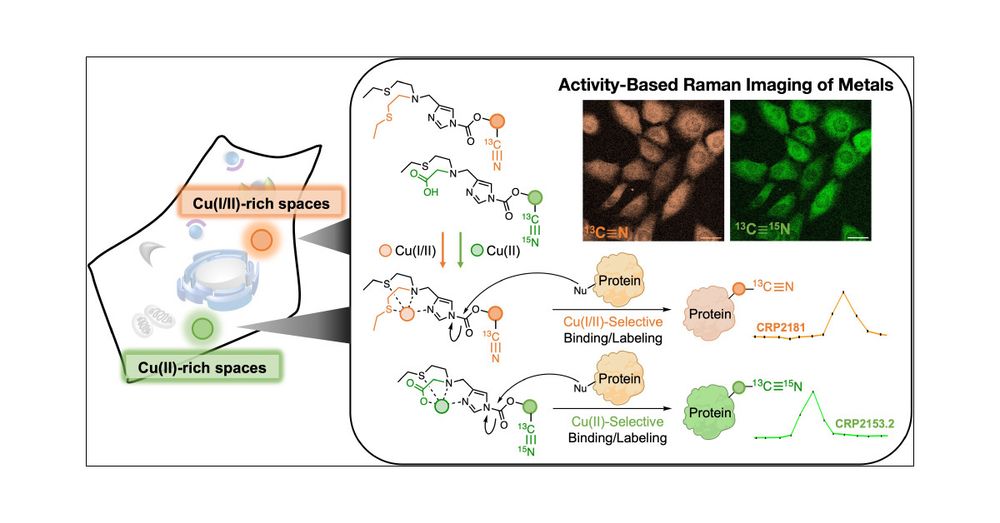
An Activity-Based Sensing Approach to Multiplex Mapping of Labile Copper Pools by Stimulated Raman Scattering
Molecular imaging with analyte-responsive probes offers a powerful chemical approach to studying biological processes. Many reagents for bioimaging employ a fluorescence readout, but the relatively br...
pubs.acs.org
November 27, 2024 at 12:30 AM
First Princeton paper! Activity-based sensing plus narrow Raman signatures enable multiplex copper imaging, revealing crosstalk between high antioxidant response element NRF2 activation and low labile Cu in cancer. Fun project with Wei Min’s lab at Columbia! #chemsky pubs.acs.org/doi/10.1021/...
Reposted by Johannes Morstein
🎨 In case anyone need…
The NIH BioArt Source is an awesome library of *free* professionally drawn illustrations for scientific presentations or figures. Downloadable in HD. Thank you NIH for this invaluable tool 🙏!
Check it out 👇
bioart.niaid.nih.gov
The NIH BioArt Source is an awesome library of *free* professionally drawn illustrations for scientific presentations or figures. Downloadable in HD. Thank you NIH for this invaluable tool 🙏!
Check it out 👇
bioart.niaid.nih.gov


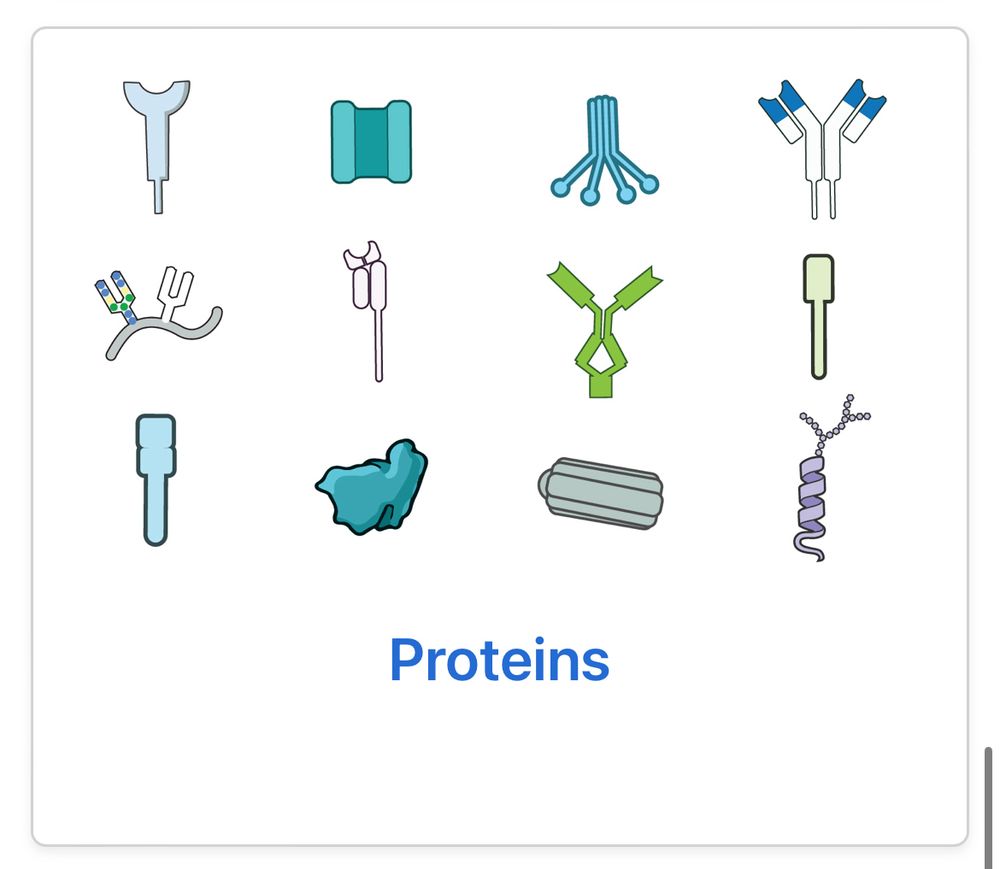
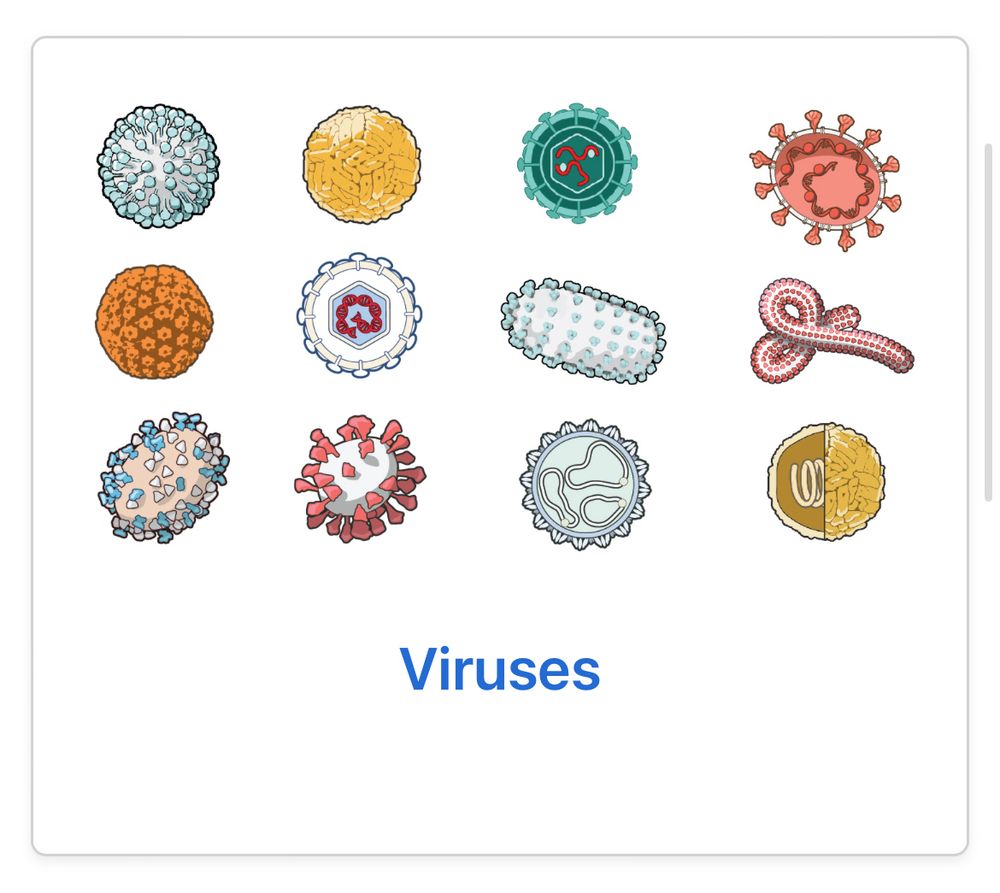
November 23, 2024 at 3:50 PM
🎨 In case anyone need…
The NIH BioArt Source is an awesome library of *free* professionally drawn illustrations for scientific presentations or figures. Downloadable in HD. Thank you NIH for this invaluable tool 🙏!
Check it out 👇
bioart.niaid.nih.gov
The NIH BioArt Source is an awesome library of *free* professionally drawn illustrations for scientific presentations or figures. Downloadable in HD. Thank you NIH for this invaluable tool 🙏!
Check it out 👇
bioart.niaid.nih.gov
Reposted by Johannes Morstein
Welcome to Bluesky! I created a starter pack for medicinal chemistry. Please comment/share and let me know if you wish to be added to the starter pack.
go.bsky.app/8JRwAao
go.bsky.app/8JRwAao
November 18, 2024 at 11:13 AM
Welcome to Bluesky! I created a starter pack for medicinal chemistry. Please comment/share and let me know if you wish to be added to the starter pack.
go.bsky.app/8JRwAao
go.bsky.app/8JRwAao
Reposted by Johannes Morstein
Ok, trying to bring my community back together... I created a starter pack for lipids and membrane protein aficionados!
Feel free to share, add and distribute, so we can come together again! 😍
go.bsky.app/AEeXh86
Feel free to share, add and distribute, so we can come together again! 😍
go.bsky.app/AEeXh86
November 16, 2024 at 3:53 AM
Ok, trying to bring my community back together... I created a starter pack for lipids and membrane protein aficionados!
Feel free to share, add and distribute, so we can come together again! 😍
go.bsky.app/AEeXh86
Feel free to share, add and distribute, so we can come together again! 😍
go.bsky.app/AEeXh86
Reposted by Johannes Morstein
📯📯 Chemical Biology starter pack 📯📯
140 PIs & groups posting primary research in chemical biology.
Please reskeet (?) & reply to this post if you want to be added!
go.bsky.app/KLrTWoj
Let's make ChemBioSky even greater again!
#realtimechem #FluorescenceFriday #chemsky #chemtwitter #AgentOrange
140 PIs & groups posting primary research in chemical biology.
Please reskeet (?) & reply to this post if you want to be added!
go.bsky.app/KLrTWoj
Let's make ChemBioSky even greater again!
#realtimechem #FluorescenceFriday #chemsky #chemtwitter #AgentOrange
November 17, 2024 at 10:58 PM
📯📯 Chemical Biology starter pack 📯📯
140 PIs & groups posting primary research in chemical biology.
Please reskeet (?) & reply to this post if you want to be added!
go.bsky.app/KLrTWoj
Let's make ChemBioSky even greater again!
#realtimechem #FluorescenceFriday #chemsky #chemtwitter #AgentOrange
140 PIs & groups posting primary research in chemical biology.
Please reskeet (?) & reply to this post if you want to be added!
go.bsky.app/KLrTWoj
Let's make ChemBioSky even greater again!
#realtimechem #FluorescenceFriday #chemsky #chemtwitter #AgentOrange

